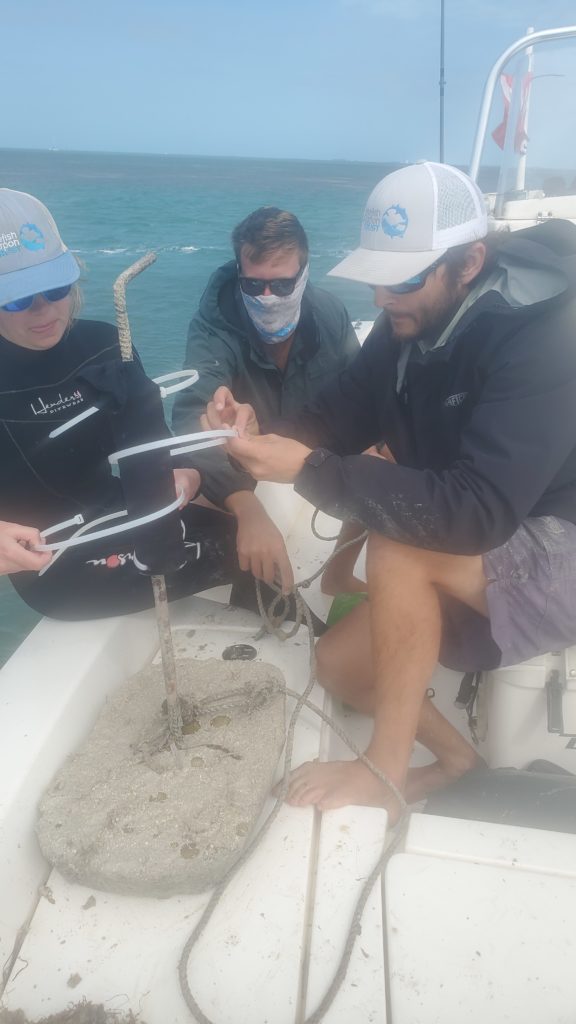Bonefish 5905. Photo: Ian Wilson
For a bonefish fishery to be productive, we must let bonefish spawn undisturbed. Therefore, finding where bonefish spawn, and protecting those fish and habitats that support them, have been a core component of BTT’s conservation approach. Throughout the Caribbean, BTT researchers have mapped bonefish spawning sites in Mexico, Belize and in the Bahamas. Finding these spawning sites has brought successful conservation outcomes. In the Bahamas, BTT worked in partnership with the Bahamas National Trust to identify and protect bonefish pre-spawning sites, some of which are now national parks. In the Keys, we have yet to find where bonefish spawn. Possibly because our bonefish populations, until recently, were so low in numbers that the few remaining fish could not form a proper aggregation. Or, because we were not looking in the right places.

Bonefish spawn in the winter months, when they migrate in large schools from up to 70 miles away to specific areas near the full and new moons. At these sites they form large pre-spawning aggregations (PSAs) that number thousands of bonefish. In the late afternoon and sunset, bonefish in the PSAs display complex pre-spawning behaviors that include porpoising at the surface and gulping air. These pre-spawning behaviors can be disrupted by stresses like poor water quality or excessive boat traffic. At night those fish move offshore, diving to depths of over 200 feet where they spawn.
To identify these Florida Keys PSAs, BTT scientists Dr. Ross Boucek and PhD student Nick Castillo are tagging and tracking the movements and migrations of bonefish. Using the same tracking technology used that BTT uses to study the migrations and movements of tarpon and permit, Castillo and Dr. Boucek implant acoustic transmitters into bonefish then tracked their movements by downloading data from receivers (listening stations) anchored to the bottom that detect those tagged fish when they swim by. Over the next two years, Dr. Boucek and Castillo hope to follow these fish to their spawning sites, so we can get these sites protected.
On their last research mission, Castillo and Dr. Boucek made an exciting discovery. On the full moon in December, a 24-inch female bonefish with the tag number 5905, which was caught and tagged in September, left her home flat on Big Pine Key and was detected by a receiver over 30 miles away.
“This is a huge step forward in finding out where Keys bonefish spawn,” said Castillo. “Bonefish have about a 2-3 mile home range area that they use for most of the year. For fish 5905 to migrate 30 miles indicates that she was probably going to spawn.”
This discovery is an exciting step in the right direction. “Capturing a part of 5905’s migration doesn’t tell us exactly where she spawned or where the PSA is, but gets us closer,” explained Dr. Boucek.
This research is one of the last pieces of the puzzle for bonefish science in the Florida Keys, and has eluded scientists for over 20 years. Finding this pre-spawning aggregation, and making sure those fish are safe, will get us one step closer to speeding up the recovery of the Keys’ iconic bonefish fishery.




